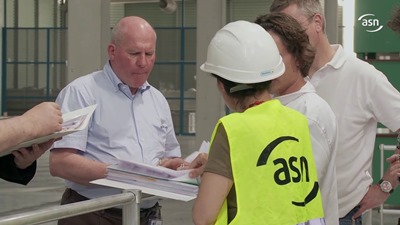Project Management: How to Overcome the Limitations of the Traditional Methods from the Industrial Age
Today more and more activities are carried out in project mode. However, the traditional project management approaches developed in the second half of the 20th century show strong limitations related to the complexity of the systems where projects take place. Well-identified practices related to complexity can be implemented to improve strategic piloting and project delivery management. This new White paper 2020-05 ‘Project Management: How to Overcome the Limitations of the Traditional Methods from the Industrial Age’ is a translation from a position paper developed for Welcome Complexity, a Non-Profit organisation based in France and focused on accounting for increased complexity in all human activities.

Project management, even if it has always existed, is a discipline formalised in the middle of the twentieth century, particularly within major defence projects, which required the coordination of multiple contributors (PERT approach: Program Evaluation and Review Technique). During the 1980s and 1990s, formal bodies of project management methods were institutionalised (Project Management Institute, International Project Management Association, etc.) with certifications based on standard project management approaches. Today, there is a profession of project managers around these standards, thus creating a “consensual professional ontology” (basic principles stabilised and not questioned), even though more and more activities are carried out in project mode.
Notwithstanding the formalisation of the approach and the increased professional development of project management specialists, all studies show that more than the majority of development projects, and often up to two thirds, significantly fail to deliver the expected benefits. They often cost much more or last much longer than expected; and sometimes deliver a facility that does not meet the initial production targets at all. This statistic applies to projects of all types and sizes and has not improved significantly in recent decades. It applies even when the context or measures of success of the project have not changed: the problem is intrinsic to the implementation of the projects.
These deviations are also much more significant when the project involves a large number of contributors and active stakeholders interacting with each other; this is often correlated with the size and ambition of the project. In this case, the deviations, if they exist, are generally very significant: major projects succeed or fail significantly. This observation highlights the role of complexity in the project deviation rate: complexity of the project system and the system around the project.
This traditional framework, which has strong limitations in the context of traditional development projects, is even more unsuitable for exploration or innovation projects. These observations are directly related to paradigm shifts in complexity.
Some alternate approaches can then be implemented:
- Facing the perceived complexity of the project and the complexity of project execution organisation
- Keeping execution flexibility
- Beyond reverse engineering and linear thinking, formally introducing project requirements into the system engineering process
- Accounting for resource constraints and overall project portfolio management
- Including upfront the requirements related to implementation
- Implementing the “agile” approach when suitable
- Implementing multi-scale approaches
- Implementing an efficient governance
- Using new different tools for project management and governance
- Implementing systemic design at the strategic level
Discover those strategies and more in our new White paper 2020-05 ‘Project Management: How to Overcome the Limitations of the Traditional Methods from the Industrial Age’
If you can’t access the link to the white paper, copy and paste the following link in your browser: https://www.projectvaluedelivery.com/_library/2020-05_Project_Management_complexity_methods_v0.pdf










How To Manage Licensing Requirements in Project Definition and Execution
Depending on the industry, the licensing process and associated requirements can be a critical activity for the success of the project. In highly regulated industry such as aerospace, rail or nuclear, licensing issues can become the critical path and even potentially derail the project. In our new White Paper 2020-03 ‘How To Manage Licensing Requirements in Project Definition and Execution’ we detail the issues associated with licensing and other regulatory aspects, and what are the best practices to manage them properly in the project definition and delivery process.
Regulatory requirements or licensing obligations may impact the project design, procurement, construction, and sometimes also the final product produced by the facility. For large projects, several regulatory fields may be applicable, and several authorities involved separately. For example, a pharmaceutical facility will be subject both to regulations on the safety of operation and to medical regulations on the quality of the product.
In our ever-increasingly regulated world, licensing requirements can easily become the critical path for large projects. It is often the case at two specific moments:
This is particularly obvious in many transportation industries, as well as in the nuclear industry. Even on smaller projects where this effect may be less noticeable, the need to go through a licensing process can produce unexpected changes in the project definition and implementation phase.
The issue is compounded by the fact that application file reviews by regulatory agencies are generally not fully predictable in terms of duration and effort, creating a substantial uncertainty as to the project execution schedule.
Good practices exist that are exposed in the White Paper. Some challenge areas are also developed:
Licensing requirements must be taken seriously and are often intrinsically linked to the final performance of the project. The licensing process can easily become the critical path or jeopardize the effective start-up of the facility. A number of actions must be taken early to include licensing requirements in the project definition process. Still, additional precautions must be considered to avoid the impact of possible change of regulations, licensing conditions and avoid missing some licensing aspects which could be highly detrimental to project realization and the economics of the future facility. Read our new White Paper 2020-03 ‘How To Manage Licensing Requirements in Project Definition and Execution’ to understand better how to deal with this issue.
If you can’t access the link to the white paper, copy and paste the following link in your browser: https://www.projectvaluedelivery.com/_library/2020-03_licensing_requirements_in_project_definition_execution_v0.pdf